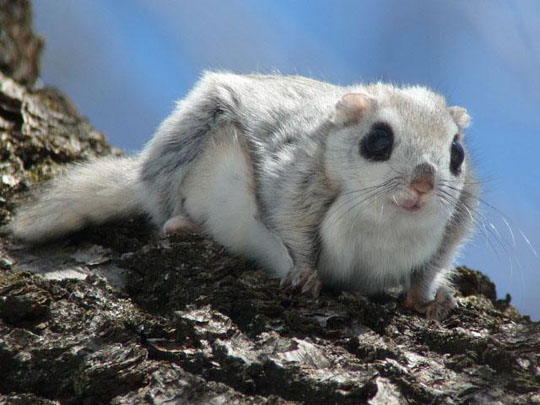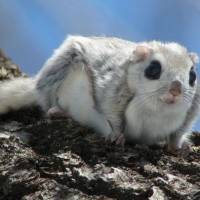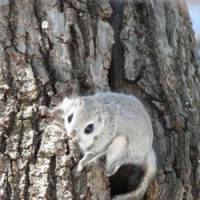When did you last go out into the woods at night? In this age of media-induced fears, and with far more than half the world's population now being urban- dwellers, fewer of us brave the outdoors even during daylight hours, let alone at night.
In darkness, humans' primary dependence on sight breaks down, forcing us to trade on our weaker perceptions of scents and sounds. But what a thrill of discovery that can be, as we perceive the wild world around us through those means.
Dusk descends slowly like a steadily thickening curtain of anti-light, creating a bewildering interface between day and night. Creatures of the anti-light slip through this interface, passing by like undefined blurs of color in our limited spectrum.
These creatures are described as being crepuscular, while light-loving ones are termed diurnal and those that shun the light are nocturnal.
The activities of crepuscular creatures book-end both day and night; they favor the times of changing light levels and choose then to emerge and explore their own realms, to forage and to lay claim to their territories.
At such times, color and texture are less discernible, and in the twilight as night approaches, the perceptible dimming of the bulb of day is seen first as a softening of all that surrounds us; the blue dome of the sky turns gray, the forest, so deep and multilayered, begins as a multi-textured brown, gray and green, but shifts imperceptibly toward a flat pen-and-ink line-drawing of itself in silhouette. Then, once all color has gone, only faint outlines linger — strongest in our peripheral vision — and best seen against the light of moon or stars. Turn to look at something and it seems, magically, to dematerialize; the trick is to glance sideways, since things on the periphery of sight linger longest. Or is it just that they are easier to imagine?
As I enter into the woods, the happy-sounding, chuckling song of a river muffles the impact of dusk. As twilight spreads, sounds seem to shift and change; for a while they seem softer, like muted voices in a cathedral. With a final brief chatter from a wren as it heads to its roost in a tangle of branches beneath a fallen tree, the day shift falls into a hushed silence. The night shift, though, has yet to emerge onto the darkened forest stage and only the river breaks the silence.
Then, after a prolonged hush, an owl hoots sonorously; its mate responds. Off in the distance, a dog fox yaps: at once a piercing warning — to other males — and an invitation to any nearby vixen. I home in on the fox's sound then watch as it trots quietly away into the forest. As I push through the sassa (dwarf bamboo) covering the forest floor it crackles and snaps, but the fox seems to shift its shape ethereally and pass through in total silence. Perhaps the same cries from owl and fox cast fear into the minds of voles and mice, causing their hearts to race and forcing them to pause in dread of the silent descent of talons, claws and teeth. The river mocks on.
As I refocus, a nearby tree trunk, stark against the slight moonlight, seems suddenly to ripple slightly. There it is again, a momentary deformity in the smoothness of the trunk's silhouette, an almost subliminal flicker of motion glimpsed only briefly in that still rift between day and night. In such low light, it feels more as if I "sense" the unheard movement rather than "see" it — but I would swear that a small shape had skittered and scurried skyward up the trunk. Then, in an instant, it was gone. Twice more I thought I glimpsed this creature of the anti-light before my vision was overwhelmed by darkness.
By night the forest is mysterious, a black bewildering void filled with unidentified sounds; by day it is a labyrinth of interlocking branches and tangles of fallen trunks. Drifts of sound now flood the early-morning forest in waves of familiarity: here a nuthatch, there a greenfinch, and in the distance the soft buzzing call of a pygmy woodpecker. The day shift is awake now and out in full force.
Searching by day for the source of those subliminal flickers of crepuscular motion is a task I have set myself; it's a challenge, but one with tremendous rewards —, not least being a collapse in my vocabulary.
As a scurrying, pale-gray shape emerges suddenly from a tree hole I glimpse a wisp of its tail, then lock on to its enormous limpid eyes. Like mysterious, shining domes of night, its huge eyes are like rounded mirrors, reflecting the whole scene. All of the forest is somehow held there in its gaze (the sky, the tree on which it rests, the woods — and me on the forest floor).
It's as if this one creature itself embodies the interface between dimensions. Its short pink nose and long whiskers, its tiny hands and claws, the wrinkled roll of fur along its sides and its broad tail arched upward and flattened along its back, conspire to defeat the scientist in me, overwhelm the naturalist in me, and connive to conjure up just one adjective in my mind — kawaii! (cute!).
I have lost track of the number of Wild Watch columns I have written over almost 30 years, but you could probably count the number of times I have used that word in print on less than the fingers of one hand!
Now, though, I am a convert. Any field guide that doesn't describe the Siberian flying squirrel (or the closely related Japanese flying squirrel), as being "cute" is missing a primary attribute.
Echoing the dusk-time antics I'd sensed before, I now watch as this Ezo-momonga (known to zoologists as Pteromys volans) scurries toward the tree top, then launches itself into oblivion. Reaching out to all points of the compass with its arms and legs, it stretches taught its patagium. This membrane, that before had appeared as a wrinkled roll of fur along its sides, then became a smooth gliding surface, gray above and white beneath — and now I understood why its tail was also so flat, since it, too, is part of the gliding surface.
The distance the flying squirrel flew astonished me. I had expected a precipitate drop to a nearby tree, but instead it made a long, almost level glide, drifting slowly downward toward another, distant trunk. There it sat awhile, surveying its forest territory from atop a burl before scurrying to a crack in the trunk, disappearing into it head first, then popping out again from another hole to regard its domain from this new vantage point. As it turned and disappeared for a final time into its daytime resting hole, I couldn't help but comment inwardly: That is definitely so cute!
Mark Brazil is a naturalist and author who organizes and leads wildlife excursions around Japan. Both his latest book, "Field Guide to the Birds of East Asia," and his earlier "A Birdwatcher's Guide to Japan" are available at leading bookstores — or by contacting him at [email protected] or via www.wildwatchjapan.com







